- Końcowe wyniki projektu GENDER 101
Projekt Gender 101 umożliwił partnerom z sześciu różnych krajów europejskich utworzenie kanału dyskusyjnego z nauczycielami i rodzicami na temat różnorodności płci
- Informacje zwrotne od ekspertów ze wszystkich krajów uczestniczących w projekcie na temat szkolenia GENDER1 101
Treść wszystkich rezultatów pracy intelektualnej została zweryfikowana przez ekspertów z poszczególnych krajów partnerskich, w tym treść narzędzia cyfrowego. Wśród informacji zwrotnych otrzymanych od różnych europejskich ekspertów na temat zawartości narzędzia cyfrowego jest to, że narzędzie cyfrowe zawiera jasne, praktyczne i oparte na faktach informacje, które zostały szczegółowo przeanalizowane. Eksperci zwrócili również uwagę na przydatność tego […]
- Natępne kroki
Ostatnie miesiące projektu zostaną przeznaczone na ewaluację. Partnerzy będą pracować nad przeglądem informacji zwrotnych otrzymanych od uczestników działań i osób realizujących te działania, a także nad narzędziem wpływu, raportami finansowymi i raportami rozpowszechniania, przed ostatecznym dostarczeniem wyników projektu.
- GENDER 101 biuletyn 5, 7/2024
W tym wydaniu: Końcowe rezultaty projektu GENDER 101; Ostatnie międzynarodowe spotkanie projektowe na Malcie; Współpraca z partnerami stowarzyszonymi; Kolejne inicjatywy; Końcowa międzynarodowa konferencja na Malcie
- Współpraca z partnerami stowarzyszonymi
W trakcie trwania projektu Partnerzy promowali prace nad projektem oraz dyskutowali i dzielili się wynikami z różnymi zainteresowanymi stronami, aby zapewnić szerokie rozpowszechnianie i wspierać dziedzictwo projektu.
- Międzynarodowa konferencja podsumowująca projekt na Malcie
Uroczysta konferencja podsumowująca została zorganizowana na Malcie w dniu 14 maja 2024 roku. W konferencji wzięło udział ponad 100 uczestników, w tym rodzice i specjaliści pracujący z rodzicami i młodymi ludźmi.
- Ostatnie międzynarodowe spotkanie projektowe na Malcie
Ostatnie fizyczne spotakanie odbyło się na Malcie 13 maja 2024 roku
- Program wydarzeń na Malcie, Litwie, w Polsce, Irlandii, Włoszech i Chorwacji
Wydarzenia upowszechniające odbyły się w pięciu krajach partnerskich: na Litwie, w Polsce, Irlandii, Włoszech i Chorwacji w kwietniu 2024 roku. Wydarzenia upowszechniające były okazją do zaprezentowania wyników projektu, a w szczególności uruchomienia narzędzi cyfrowych. Końcowa konferencja zostanie zorganizowana na Malcie, w siedzibie koordynatora projektu 14 maja 2024 roku.
- GENDER 101 biuletyn 4, 4/2024
W tym wydaniu: Narzędzia cyfrowe GENDER 101; Szkolenia GENDER 101 dla rodziców we wszystkich krajach objętych projektem; Informacje zwrotne od ekspertów ze wszystkich krajów uczestniczących w projekcie na temat szkolenia GENDER1 101; Program wydarzeń na Malcie, Litwie, w Polsce, Irlandii, Włoszech i Chorwacji
- Wspieranie dzieci zróżnicowanych płciowo w klasie
Nauczyciele, którzy chcą wspierać uczniów o zróżnicowanym statusie płciowym w klasie, muszą stworzyć integracyjne, życzliwe i wspierające środowisko uczenia się. Oto kilka strategii do rozważenia: Poznaj różnorodność płci, w tym słownictwo i pomocne wskazówki dotyczące pracy z dziećmi z różnych środowisk. Bądź na bieżąco z najnowszymi badaniami i strategiami instruktażowymi w tej dziedzinie. Używaj terminologii, […]
- Oznaki kwestionowania tożsamości płciowej przez dziecka
Na co zwrócić uwagę, aby zrozumieć, czy moje dziecko kwestionuje swoją tożsamość płciową? Na co zwracać uwagę? Na co zwrócić uwagę, aby zrozumieć, czy moje dziecko kwestionuje swoją tożsamość płciową? Na co zwracać uwagę? Zwracanie szczególnej uwagi na szczegóły jest konieczne, aby zidentyfikować oznaki i zachowania dziecka kwestionujące jego tożsamość płciową. Ważne jest, aby […]
- Jak wspierać zdrowie psychiczne dzieci LGBT+?
Aby wspierać zdrowie psychiczne dziecka zróżnicowanego płciowo, należy podjąć szereg istotnych rozważań i działań: Kluczowe znaczenie ma stworzenie bezpiecznej i wspierającej atmosfery. Stwórz w domu środowisko, w którym dziecko może swobodnie wyrażać swoją tożsamość płciową bez obawy o reperkusje. Obejmuje to używanie preferowanego imienia i zaimków oraz szanowanie jego tożsamości. Dowiedz się o różnicach […]
- Związek dyskryminacji z kulturą i zapobieganie jej
Jak dyskryminacja wiąże się z kulturą, w której żyjemy? Jak nie wpaść w widmo dyskryminacji w pewnych sytuacjach? Dyskryminacja jest głęboko zakorzeniona w społeczeństwie i może opierać się na wielu różnych cechach. Przejawia się w codziennym życiu, w indywidualnym postrzeganiu kultury i zwyczajów, w strukturach społecznych i gospodarczych, w edukacji i zatrudnieniu oraz w […]
- Jak powinienem używać zaimków?
Zaimek to słowo zastępujące rzeczownik. Zaimek neutralny płciowo lub uwzględniający płeć to zaimek, który nie kojarzy płci z osobą, o której mowa. Niektóre języki, takie jak angielski, nie mają zaimka neutralnego płciowo lub trzeciej płci, co jest krytykowane, ponieważ w wielu przypadkach pisarze, mówcy itp. używają „he/his”, gdy odnoszą się do ogólnej osoby w […]
- Czym jest język neutralny płciowo?
Język neutralny płciowo, nazywany również językiem nieseksistowskim, włączającym płeć lub językiem niespecyficznym dla płci, odnosi się do języka zawierającego słowa lub wyrażenia, których nie można odnieść tylko do jednej płci. Ten rodzaj języka pozwala uniknąć uprzedzeń wobec określonej płci lub płci. Należy podkreślić, że w języku angielskim istnieje różnica między „płcią gramatyczną”, „płcią jako […]
- Czy tożsamość płciowa jest zaraźliwa?
Dobrze zorganizowane podejście, korygujące to powszechne nieporozumienie, rozpoczyna się od fundamentalnego wyjaśnienia definicji „zaraźliwości” i przechodzi do analizy stereotypów. Podejście to skutecznie obala błąd, jednocześnie przekazując wiedzę na temat tożsamości płciowej i różnorodności. Włączenie szczegółów dotyczących znaczenia empatii, zrozumienia i rozróżnienia między wpływem a zarażeniem może dostarczyć dalszych wyjaśnień w celu wzmocnienia tej odpowiedzi. Ponadto […]
- Omawianie tych kwestii z innymi dziećmi
Segment ten stanowi solidną podstawę do zapoznania młodych osób z LGBTQ+ i podkreśla znaczenie różnorodności i inkluzywności. Aby ulepszyć ten segment, należy rozważyć włączenie zaleceń dotyczących działań i języka, które są odpowiednie dla docelowej grupy wiekowej i które mogą sprzyjać zrozumieniu. Ponadto korzystne może być zaoferowanie wskazówek dotyczących reagowania na pytania lub uwagi dzieci, które […]
- Edukacja innych uczniów w zakresie różnorodności płciowej
Wyjaśniony materiał jest dokładny i wszechstronny, używając języka, który powinien być zrozumiały dla szerokiego spektrum osób. Skutecznie rozwiewa błędy i koryguje powszechne nieporozumienia dotyczące różnorodności płci. Aby ulepszyć ten segment, korzystne byłoby włączenie dodatkowych konkretnych ilustracji lub analogii, które można łatwo odnieść do dzieci. Służyłoby to konkretyzacji pojęcia różnorodności płciowej dla młodszych widzów. Opowiadanie się […]
- Jak wspierać dziecko w kwestiach płci?
Konieczne jest wspieranie tożsamości płciowej i zachowania dziecka, nawet jeśli jest ono osobą transpłciową lub transpłciową. Rodzice, akceptując i okazując im miłość i akceptację takimi, jakimi są (niezależnie od tego, czy jest to tylko faza), mogą pomóc im czuć się bardziej zadowolonymi, szczęśliwymi i gotowymi do stawienia czoła środowisku, które może być uprzedzone. Jeśli dziecko […]
- Zmiany imienia lub płci w szkole – jak pomóc?
Aby dzieci mogły poradzić sobie ze zmianą płci w szkole, ważne jest, aby edukować i uwrażliwiać nauczycieli i dzieci w celu zaakceptowania uczniów takimi, jakimi są, niezależnie od różnorodności płci lub seksualności. Ważne jest również stworzenie w szkole atmosfery, w której dzieci mogą otwarcie myśleć i rozmawiać o seksualności i tożsamości płciowej. Konieczne jest zapewnienie […]
- Czy to tylko przejściowa faza?
Faktem jest, że temat różnorodności płciowej był omawiany bardziej otwarcie w ciągu ostatnich kilku lat i jest pewne, że istniał znacznie dłużej. Dla niektórych dzieci jest to z pewnością orientacja płciowa różna od płci, podczas gdy dla niektórych dzieci jest to nadal faza. Okres dojrzewania przynosi wyzwania rozwojowe typowe i naturalne dla procesu dorastania i […]
- Jak postępować z dzieckiem różnopłciowym?
Stawianie czoła sytuacji, w której jedno z rodziców ma trudności z zaakceptowaniem niezgodności płciowej swojego dziecka, może być złożonym i emocjonalnie obciążającym doświadczeniem. Oto kilka strategii, które mogą pomóc w radzeniu sobie z takimi sytuacjami: Otwarta i empatyczna komunikacja: Aktywne słuchanie i walidacja: Stwórz bezpieczną przestrzeń dla obojga rodziców, aby mogli wyrazić swoje obawy, lęki […]
- Jak możesz wspierać to poszukiwanie?
Ujarzmij ciekawość: Pomyśl o sobie jak o ogrodniku, który tworzy bezpieczną przestrzeń dla rozkwitu ciekawości dziecka. Zachęcaj je do zadawania pytań, odkrywania różnych zainteresowań i autentycznego wyrażania siebie bez osądzania. Zasiej nasiona zrozumienia: Podobnie jak światło słoneczne odżywia kwiat, zapewnij odpowiednie dla wieku zasoby, takie jak książki, filmy dokumentalne lub rozmowy na temat różnorodności płci. […]
- Czy tożsamość płciowa dziecka może się zmienić?
Zrozumienie przez dziecko swojej tożsamości płciowej może z czasem ewoluować. Wynika to z dynamicznej natury samopoznania, na którą wpływa złożona interakcja czynników, w tym Wewnętrzne procesy psychologiczne: Obejmuje to wewnętrzne poczucie siebie dziecka i to, jak czuje się ono w związku z płcią. To wewnętrzne poczucie może, ale nie musi być zgodne z przypisaną płcią […]
- Kiedy dzieci rozpoznają swoją tożsamość płciową?
Rozpoznanie własnej tożsamości płciowej jest wieloaspektowym i dynamicznym procesem, który rozwija się na różnych etapach rozwoju. Chociaż badania sugerują, że dzieci w wieku zaledwie 2 lat mogą zacząć wyrażać preferencje i skłonności związane z określoną płcią (American Academy of Pediatrics, 2019), ważne jest, aby pamiętać, że jest to tylko początkowa iskra. Pełne uświadomienie sobie tożsamości […]
- Różnica pomiędzy płcią a orientacją seksualną
Tożsamość płciowa i orientacja seksualna to różne cechy osobowości. Tożsamość płciowa jest kwestią osobistą (jak postrzegasz siebie), dotyczy ona tego, jak definiujesz siebie w odniesieniu do własnej płci. Podczas gdy orientacja seksualna ma charakter interpersonalny (kogo pociągasz fizycznie, emocjonalnie i/lub romantycznie). Tradycyjne normy społeczne często dyktują surowe zasady dotyczące tego, jak ludzie „powinni” zachowywać się, […]
- Czy jest to trend?
Różnorodność płciowa nie jest tylko trendem, nie jest kaprysem, nie jest chorobą, nie jest perwersją, a dzieci nie są zagrożone przez osoby transpłciowe. Dzieci uczące się o transpłciowości nie wpływają na swoją tożsamość płciową. Taka wiedza nie sprawia, że dzieci cispłciowe „stają się” transpłciowe, podobnie jak uczenie się o różnych narodowościach nie zmienia czyjegoś pochodzenia […]
- Czym jest tożsamość płciowa?
Dla wielu osób zróżnicowanych płciowo koncepcja płci binarnej – konieczność wyboru wyrażania siebie jako mężczyzny lub kobiety – jest ograniczająca. Niektórzy ludzie woleliby mieć swobodę wyboru płci lub w ogóle nie mieć tożsamości płciowej. Inni chcą po prostu móc otwarcie przeciwstawić się lub rzucić wyzwanie bardziej znormalizowanym koncepcjom płci. Tożsamość płciowa jest częścią naszego postrzegania […]
- Narzędzia cyfrowe GENDER 101
Narzędzia cyfrowe (The GENDER 101 digital tools) to przełomowe narzędzia, które pomagają środowiskom edukacyjnym zrozumieć różnorodność i tożsamość płciową. Te unikalne narzędzia zapewniają niezbędne narzędzia, spostrzeżenia i strategie, które pomagają wspierać debaty na temat płci, kwestionować ustalone konwencje i promować bardziej inkluzywne spojrzenie na tożsamość płciową.
- Co z nami?
Konferencja „A Co z nami? Rodzice i edukatorzy osób zróżnicowanych płciowo” ma na celu pogłębienie zrozumienia różnorodności płciowej wśród dzieci.
- Wydarzenia na Malcie, Litwie, w Polsce, Irlandii, Chorwacji i we Włoszech
Zespół projektowy planuje organizację wydarzeń we wszystkich krajach objętych projektem
- ZAPAMIETAJ SOBIE TĘ DATĘ: Różnorodność płci?
Różnorodność płci? (dla trenerów i rodziców) – 19 kwietnia 2024 r., Neapol (Włochy) – 17:00-19:00
- Using the Guide for Trainers
„Przewodnik dla trenerów: Wprowadzenie do różnorodności płciowej” to doskonałe źródło informacji dla trenerów, którzy chcą skutecznie radzić sobie z tożsamością płciową, ekspresją płciową i powiązanymi wyzwaniami.
- GENDER 101 biuletyn informacyjny nr 3, 3/2024
W tym wydaniu: Program GENDER 101 dla trenerów; Informacje zwrotne na temat szkolenia GENDER1 101 od trenerów i rodziców; Spotkanie przejściowe online i międzynarodowe spotkanie projektowe w Irlandii; Korzystanie z przewodnika dla trenerów
- Spotkanie online i międzynarodowe spotkanie projektowe w Irlandii
Partnerzy projektu aktywnie współpracują przy jego realizacji.
- GENDER 101 Szkolenie dla rodziców we wszystkich krajach objętych projektem
Kursy szkoleniowe odbyły się latem 2023 r. z udziałem rodziców z sześciu krajów partnerskich. Chociaż niektórzy partnerzy napotkali trudności w rekrutacji rodziców do udziału w zajęciach, po zakończeniu sesji rodzice czuli się komfortowo i bezpiecznie oraz zdawali sobie sprawę, że uczestniczą w zajęciach w atmosferze otwartości, gdzie mogą się uczyć, rozmawiać i zadawać pytania.
- Informacje zwrotne na temat szkolenia GENDER 101 od trenerów i rodziców
Rozmaite działania przeprowadzone z udziałem 18 trenerów i 360 rodziców w krajach objętych projektem dały zespołowi projektowemu możliwość zebrania kompleksowych informacji zwrotnych na temat szkolenia w ramach projektu.
- Szkolenie w zakresie różnorodności płciowej
Jednym z rezultatów projektu Gender 101 jest stworzenie przestrzeni do szkolenia w zakresie różnorodności płci.
- GENDER 101 biuletyn informacyjny 2, 7/2023
W tym wydaniu: Podstawowe terminy związane z tożsamością płciową; Międzynarodowe spotkanie projektowe w Polsce: Program edukacyjny GENDER 101 dla trenerów i rodziców; Szkolenie trenerów GENDER 101 w krajach uczestniczących w projekcie; Przewodnik GENDER 101 dla trenerów
- Program edukacyjny GENDER 101 dla trenerów i rodziców
Edukacja poświęcona GENDER 101 objęła 360 rodziców w krajach uczestniczących w projekcie.
- GENDER 101 – Przewodnik dla trenerów
Materiały pomocnicze GENDER 101 dla trenerów i stron zainteresowanych przygotowane przez zespół projektowy
- GENDER 101 szkolenie trenerów w krajach realizujących projekt
Kursy doskonalące GENDER 101 dla trenerów we wszystkich krajach realizujących projekt
- Międzynarodowe spotkanie projektowe w Polsce
W dniach 23-24 maja 2023 r. zespół projektowy spotkał się w Łodzi (Polska)
- NEWSLETTER NUMER 1, 2/2023
Wewnątrz tego wydania: Gender?; Płeć i język; Grupy fokusowe z nauczycielami i rodzicami w krajach objętych projektem; Projekt GENDER 101; Misja projektu GENDER 101; Branding GENDER 101; Spotkanie inauguracyjne GENDER 101 na Litwie
- Słowa związane z Gender
W trakcie działań konsultacyjnych prowadzonych na Malcie, Litwie, w Polsce, Irlandii, Włoszech i Chorwacji, w ramach projektu GENDER 101 zidentyfikowano kluczowe słowa opisujące płeć i przeszkody w integracji płci
- Grupy dyskusyjne z edukatorami i rodzicami w krajach partnerskich
Zespół projektowy przeprowadził konsultacje z nauczycielami i rodzicami na Malcie, Litwie, w Polsce, Irlandii, Włoszech i Chorwacji na temat płci i przeszkód w integracji płci
- Gender i język
Język i płeć są ze sobą powiązane, ponieważ język może odzwierciedlać i wzmacniać społeczne normy i oczekiwania dotyczące płci
- Język Gender na Malcie
Niedawno podjęto pewne wysiłki w celu promowania języka uwzględniającego płeć na Malcie, ale proces ten wciąż trwa
- Płeć w języku chorwackim
W Chorwacji nie ma określonego standardu ani przewodnika, który byłby używany jako język genderowy
- Płeć w języku irlandzkim
Używanie języka genderowego w języku irlandzkim może być kwestią sporną, szczególnie w odniesieniu do włączenia osób niebinarnych i niezgodnych z płcią
- Płeć w języku polskim
Język polski jest generalnie binarny, rzeczowniki posiadają rodzaj, również czasowniki i przymiotniki odmieniane są w zależności od rodzaju rzeczownika, do którego się odnoszą
- Płeć w języku litewskim
Tożsamość płciowa nadal nie jest prawnie uznawana na Litwie. W związku z tym w języku litewskim nie ma oddzielnych słów określających różne aspekty płci
- Płeć w języku włoskim
W języku włoskim trwają badania nad odpowiednimi wyrażeniami reprezentującymi osoby, które nie rozpoznają siebie w binarnej płci, w celu promowania języka, który będzie bardziej szanował różnorodność i uwzględniał wszystkie płcie
- Płeć?
„Płeć odnosi się do cech kobiet, mężczyzn, dziewcząt i chłopców, które są zdeterminowane społecznie”. Światowa Organizacja Zdrowia, 2023
- Spotkanie zespołu projektowego GENDER 101 na Litwie
W dniach 24-25 stycznia 2023 r. zespół projektu GENDER 101 spotkał się osobiście w Szawlach (Litwa)
- Branding GENDER 101
W ramach projektu GENDER 101 opracowano strategię brandingową opartą na logo i identyfikacji wizualnej
- Pierwsze kroki w projekcie
Spotkanie inauguracyjne online partnerów projektu w celu zainicjowania działań GENDER 101
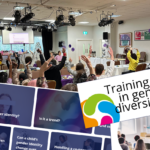 Projekt Gender 101 umożliwił partnerom z sześciu różnych krajów europejskich utworzenie kanału dyskusyjnego z nauczycielami i rodzicami na temat różnorodności płci
Projekt Gender 101 umożliwił partnerom z sześciu różnych krajów europejskich utworzenie kanału dyskusyjnego z nauczycielami i rodzicami na temat różnorodności płci Treść wszystkich rezultatów pracy intelektualnej została zweryfikowana przez ekspertów z poszczególnych krajów partnerskich, w tym treść narzędzia cyfrowego. Wśród informacji zwrotnych otrzymanych od różnych europejskich ekspertów na temat zawartości narzędzia cyfrowego jest to, że narzędzie cyfrowe zawiera jasne, praktyczne i oparte na faktach informacje, które zostały szczegółowo przeanalizowane. Eksperci zwrócili również uwagę na przydatność tego […]
Treść wszystkich rezultatów pracy intelektualnej została zweryfikowana przez ekspertów z poszczególnych krajów partnerskich, w tym treść narzędzia cyfrowego. Wśród informacji zwrotnych otrzymanych od różnych europejskich ekspertów na temat zawartości narzędzia cyfrowego jest to, że narzędzie cyfrowe zawiera jasne, praktyczne i oparte na faktach informacje, które zostały szczegółowo przeanalizowane. Eksperci zwrócili również uwagę na przydatność tego […] Ostatnie miesiące projektu zostaną przeznaczone na ewaluację. Partnerzy będą pracować nad przeglądem informacji zwrotnych otrzymanych od uczestników działań i osób realizujących te działania, a także nad narzędziem wpływu, raportami finansowymi i raportami rozpowszechniania, przed ostatecznym dostarczeniem wyników projektu.
Ostatnie miesiące projektu zostaną przeznaczone na ewaluację. Partnerzy będą pracować nad przeglądem informacji zwrotnych otrzymanych od uczestników działań i osób realizujących te działania, a także nad narzędziem wpływu, raportami finansowymi i raportami rozpowszechniania, przed ostatecznym dostarczeniem wyników projektu. W tym wydaniu: Końcowe rezultaty projektu GENDER 101; Ostatnie międzynarodowe spotkanie projektowe na Malcie; Współpraca z partnerami stowarzyszonymi; Kolejne inicjatywy; Końcowa międzynarodowa konferencja na Malcie
W tym wydaniu: Końcowe rezultaty projektu GENDER 101; Ostatnie międzynarodowe spotkanie projektowe na Malcie; Współpraca z partnerami stowarzyszonymi; Kolejne inicjatywy; Końcowa międzynarodowa konferencja na Malcie W trakcie trwania projektu Partnerzy promowali prace nad projektem oraz dyskutowali i dzielili się wynikami z różnymi zainteresowanymi stronami, aby zapewnić szerokie rozpowszechnianie i wspierać dziedzictwo projektu.
W trakcie trwania projektu Partnerzy promowali prace nad projektem oraz dyskutowali i dzielili się wynikami z różnymi zainteresowanymi stronami, aby zapewnić szerokie rozpowszechnianie i wspierać dziedzictwo projektu. Uroczysta konferencja podsumowująca została zorganizowana na Malcie w dniu 14 maja 2024 roku. W konferencji wzięło udział ponad 100 uczestników, w tym rodzice i specjaliści pracujący z rodzicami i młodymi ludźmi.
Uroczysta konferencja podsumowująca została zorganizowana na Malcie w dniu 14 maja 2024 roku. W konferencji wzięło udział ponad 100 uczestników, w tym rodzice i specjaliści pracujący z rodzicami i młodymi ludźmi. Ostatnie fizyczne spotakanie odbyło się na Malcie 13 maja 2024 roku
Ostatnie fizyczne spotakanie odbyło się na Malcie 13 maja 2024 roku Wydarzenia upowszechniające odbyły się w pięciu krajach partnerskich: na Litwie, w Polsce, Irlandii, Włoszech i Chorwacji w kwietniu 2024 roku. Wydarzenia upowszechniające były okazją do zaprezentowania wyników projektu, a w szczególności uruchomienia narzędzi cyfrowych. Końcowa konferencja zostanie zorganizowana na Malcie, w siedzibie koordynatora projektu 14 maja 2024 roku.
Wydarzenia upowszechniające odbyły się w pięciu krajach partnerskich: na Litwie, w Polsce, Irlandii, Włoszech i Chorwacji w kwietniu 2024 roku. Wydarzenia upowszechniające były okazją do zaprezentowania wyników projektu, a w szczególności uruchomienia narzędzi cyfrowych. Końcowa konferencja zostanie zorganizowana na Malcie, w siedzibie koordynatora projektu 14 maja 2024 roku.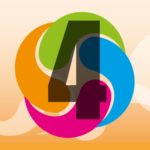 W tym wydaniu: Narzędzia cyfrowe GENDER 101; Szkolenia GENDER 101 dla rodziców we wszystkich krajach objętych projektem; Informacje zwrotne od ekspertów ze wszystkich krajów uczestniczących w projekcie na temat szkolenia GENDER1 101; Program wydarzeń na Malcie, Litwie, w Polsce, Irlandii, Włoszech i Chorwacji
W tym wydaniu: Narzędzia cyfrowe GENDER 101; Szkolenia GENDER 101 dla rodziców we wszystkich krajach objętych projektem; Informacje zwrotne od ekspertów ze wszystkich krajów uczestniczących w projekcie na temat szkolenia GENDER1 101; Program wydarzeń na Malcie, Litwie, w Polsce, Irlandii, Włoszech i Chorwacji Nauczyciele, którzy chcą wspierać uczniów o zróżnicowanym statusie płciowym w klasie, muszą stworzyć integracyjne, życzliwe i wspierające środowisko uczenia się. Oto kilka strategii do rozważenia: Poznaj różnorodność płci, w tym słownictwo i pomocne wskazówki dotyczące pracy z dziećmi z różnych środowisk. Bądź na bieżąco z najnowszymi badaniami i strategiami instruktażowymi w tej dziedzinie. Używaj terminologii, […]
Nauczyciele, którzy chcą wspierać uczniów o zróżnicowanym statusie płciowym w klasie, muszą stworzyć integracyjne, życzliwe i wspierające środowisko uczenia się. Oto kilka strategii do rozważenia: Poznaj różnorodność płci, w tym słownictwo i pomocne wskazówki dotyczące pracy z dziećmi z różnych środowisk. Bądź na bieżąco z najnowszymi badaniami i strategiami instruktażowymi w tej dziedzinie. Używaj terminologii, […] Na co zwrócić uwagę, aby zrozumieć, czy moje dziecko kwestionuje swoją tożsamość płciową? Na co zwracać uwagę? Na co zwrócić uwagę, aby zrozumieć, czy moje dziecko kwestionuje swoją tożsamość płciową? Na co zwracać uwagę? Zwracanie szczególnej uwagi na szczegóły jest konieczne, aby zidentyfikować oznaki i zachowania dziecka kwestionujące jego tożsamość płciową. Ważne jest, aby […]
Na co zwrócić uwagę, aby zrozumieć, czy moje dziecko kwestionuje swoją tożsamość płciową? Na co zwracać uwagę? Na co zwrócić uwagę, aby zrozumieć, czy moje dziecko kwestionuje swoją tożsamość płciową? Na co zwracać uwagę? Zwracanie szczególnej uwagi na szczegóły jest konieczne, aby zidentyfikować oznaki i zachowania dziecka kwestionujące jego tożsamość płciową. Ważne jest, aby […] Aby wspierać zdrowie psychiczne dziecka zróżnicowanego płciowo, należy podjąć szereg istotnych rozważań i działań: Kluczowe znaczenie ma stworzenie bezpiecznej i wspierającej atmosfery. Stwórz w domu środowisko, w którym dziecko może swobodnie wyrażać swoją tożsamość płciową bez obawy o reperkusje. Obejmuje to używanie preferowanego imienia i zaimków oraz szanowanie jego tożsamości. Dowiedz się o różnicach […]
Aby wspierać zdrowie psychiczne dziecka zróżnicowanego płciowo, należy podjąć szereg istotnych rozważań i działań: Kluczowe znaczenie ma stworzenie bezpiecznej i wspierającej atmosfery. Stwórz w domu środowisko, w którym dziecko może swobodnie wyrażać swoją tożsamość płciową bez obawy o reperkusje. Obejmuje to używanie preferowanego imienia i zaimków oraz szanowanie jego tożsamości. Dowiedz się o różnicach […] Jak dyskryminacja wiąże się z kulturą, w której żyjemy? Jak nie wpaść w widmo dyskryminacji w pewnych sytuacjach? Dyskryminacja jest głęboko zakorzeniona w społeczeństwie i może opierać się na wielu różnych cechach. Przejawia się w codziennym życiu, w indywidualnym postrzeganiu kultury i zwyczajów, w strukturach społecznych i gospodarczych, w edukacji i zatrudnieniu oraz w […]
Jak dyskryminacja wiąże się z kulturą, w której żyjemy? Jak nie wpaść w widmo dyskryminacji w pewnych sytuacjach? Dyskryminacja jest głęboko zakorzeniona w społeczeństwie i może opierać się na wielu różnych cechach. Przejawia się w codziennym życiu, w indywidualnym postrzeganiu kultury i zwyczajów, w strukturach społecznych i gospodarczych, w edukacji i zatrudnieniu oraz w […]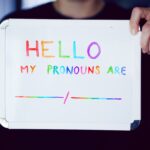 Zaimek to słowo zastępujące rzeczownik. Zaimek neutralny płciowo lub uwzględniający płeć to zaimek, który nie kojarzy płci z osobą, o której mowa. Niektóre języki, takie jak angielski, nie mają zaimka neutralnego płciowo lub trzeciej płci, co jest krytykowane, ponieważ w wielu przypadkach pisarze, mówcy itp. używają „he/his”, gdy odnoszą się do ogólnej osoby w […]
Zaimek to słowo zastępujące rzeczownik. Zaimek neutralny płciowo lub uwzględniający płeć to zaimek, który nie kojarzy płci z osobą, o której mowa. Niektóre języki, takie jak angielski, nie mają zaimka neutralnego płciowo lub trzeciej płci, co jest krytykowane, ponieważ w wielu przypadkach pisarze, mówcy itp. używają „he/his”, gdy odnoszą się do ogólnej osoby w […] Język neutralny płciowo, nazywany również językiem nieseksistowskim, włączającym płeć lub językiem niespecyficznym dla płci, odnosi się do języka zawierającego słowa lub wyrażenia, których nie można odnieść tylko do jednej płci. Ten rodzaj języka pozwala uniknąć uprzedzeń wobec określonej płci lub płci. Należy podkreślić, że w języku angielskim istnieje różnica między „płcią gramatyczną”, „płcią jako […]
Język neutralny płciowo, nazywany również językiem nieseksistowskim, włączającym płeć lub językiem niespecyficznym dla płci, odnosi się do języka zawierającego słowa lub wyrażenia, których nie można odnieść tylko do jednej płci. Ten rodzaj języka pozwala uniknąć uprzedzeń wobec określonej płci lub płci. Należy podkreślić, że w języku angielskim istnieje różnica między „płcią gramatyczną”, „płcią jako […] Dobrze zorganizowane podejście, korygujące to powszechne nieporozumienie, rozpoczyna się od fundamentalnego wyjaśnienia definicji „zaraźliwości” i przechodzi do analizy stereotypów. Podejście to skutecznie obala błąd, jednocześnie przekazując wiedzę na temat tożsamości płciowej i różnorodności. Włączenie szczegółów dotyczących znaczenia empatii, zrozumienia i rozróżnienia między wpływem a zarażeniem może dostarczyć dalszych wyjaśnień w celu wzmocnienia tej odpowiedzi. Ponadto […]
Dobrze zorganizowane podejście, korygujące to powszechne nieporozumienie, rozpoczyna się od fundamentalnego wyjaśnienia definicji „zaraźliwości” i przechodzi do analizy stereotypów. Podejście to skutecznie obala błąd, jednocześnie przekazując wiedzę na temat tożsamości płciowej i różnorodności. Włączenie szczegółów dotyczących znaczenia empatii, zrozumienia i rozróżnienia między wpływem a zarażeniem może dostarczyć dalszych wyjaśnień w celu wzmocnienia tej odpowiedzi. Ponadto […] Segment ten stanowi solidną podstawę do zapoznania młodych osób z LGBTQ+ i podkreśla znaczenie różnorodności i inkluzywności. Aby ulepszyć ten segment, należy rozważyć włączenie zaleceń dotyczących działań i języka, które są odpowiednie dla docelowej grupy wiekowej i które mogą sprzyjać zrozumieniu. Ponadto korzystne może być zaoferowanie wskazówek dotyczących reagowania na pytania lub uwagi dzieci, które […]
Segment ten stanowi solidną podstawę do zapoznania młodych osób z LGBTQ+ i podkreśla znaczenie różnorodności i inkluzywności. Aby ulepszyć ten segment, należy rozważyć włączenie zaleceń dotyczących działań i języka, które są odpowiednie dla docelowej grupy wiekowej i które mogą sprzyjać zrozumieniu. Ponadto korzystne może być zaoferowanie wskazówek dotyczących reagowania na pytania lub uwagi dzieci, które […] Wyjaśniony materiał jest dokładny i wszechstronny, używając języka, który powinien być zrozumiały dla szerokiego spektrum osób. Skutecznie rozwiewa błędy i koryguje powszechne nieporozumienia dotyczące różnorodności płci. Aby ulepszyć ten segment, korzystne byłoby włączenie dodatkowych konkretnych ilustracji lub analogii, które można łatwo odnieść do dzieci. Służyłoby to konkretyzacji pojęcia różnorodności płciowej dla młodszych widzów. Opowiadanie się […]
Wyjaśniony materiał jest dokładny i wszechstronny, używając języka, który powinien być zrozumiały dla szerokiego spektrum osób. Skutecznie rozwiewa błędy i koryguje powszechne nieporozumienia dotyczące różnorodności płci. Aby ulepszyć ten segment, korzystne byłoby włączenie dodatkowych konkretnych ilustracji lub analogii, które można łatwo odnieść do dzieci. Służyłoby to konkretyzacji pojęcia różnorodności płciowej dla młodszych widzów. Opowiadanie się […] Konieczne jest wspieranie tożsamości płciowej i zachowania dziecka, nawet jeśli jest ono osobą transpłciową lub transpłciową. Rodzice, akceptując i okazując im miłość i akceptację takimi, jakimi są (niezależnie od tego, czy jest to tylko faza), mogą pomóc im czuć się bardziej zadowolonymi, szczęśliwymi i gotowymi do stawienia czoła środowisku, które może być uprzedzone. Jeśli dziecko […]
Konieczne jest wspieranie tożsamości płciowej i zachowania dziecka, nawet jeśli jest ono osobą transpłciową lub transpłciową. Rodzice, akceptując i okazując im miłość i akceptację takimi, jakimi są (niezależnie od tego, czy jest to tylko faza), mogą pomóc im czuć się bardziej zadowolonymi, szczęśliwymi i gotowymi do stawienia czoła środowisku, które może być uprzedzone. Jeśli dziecko […] Aby dzieci mogły poradzić sobie ze zmianą płci w szkole, ważne jest, aby edukować i uwrażliwiać nauczycieli i dzieci w celu zaakceptowania uczniów takimi, jakimi są, niezależnie od różnorodności płci lub seksualności. Ważne jest również stworzenie w szkole atmosfery, w której dzieci mogą otwarcie myśleć i rozmawiać o seksualności i tożsamości płciowej. Konieczne jest zapewnienie […]
Aby dzieci mogły poradzić sobie ze zmianą płci w szkole, ważne jest, aby edukować i uwrażliwiać nauczycieli i dzieci w celu zaakceptowania uczniów takimi, jakimi są, niezależnie od różnorodności płci lub seksualności. Ważne jest również stworzenie w szkole atmosfery, w której dzieci mogą otwarcie myśleć i rozmawiać o seksualności i tożsamości płciowej. Konieczne jest zapewnienie […] Faktem jest, że temat różnorodności płciowej był omawiany bardziej otwarcie w ciągu ostatnich kilku lat i jest pewne, że istniał znacznie dłużej. Dla niektórych dzieci jest to z pewnością orientacja płciowa różna od płci, podczas gdy dla niektórych dzieci jest to nadal faza. Okres dojrzewania przynosi wyzwania rozwojowe typowe i naturalne dla procesu dorastania i […]
Faktem jest, że temat różnorodności płciowej był omawiany bardziej otwarcie w ciągu ostatnich kilku lat i jest pewne, że istniał znacznie dłużej. Dla niektórych dzieci jest to z pewnością orientacja płciowa różna od płci, podczas gdy dla niektórych dzieci jest to nadal faza. Okres dojrzewania przynosi wyzwania rozwojowe typowe i naturalne dla procesu dorastania i […] Stawianie czoła sytuacji, w której jedno z rodziców ma trudności z zaakceptowaniem niezgodności płciowej swojego dziecka, może być złożonym i emocjonalnie obciążającym doświadczeniem. Oto kilka strategii, które mogą pomóc w radzeniu sobie z takimi sytuacjami: Otwarta i empatyczna komunikacja: Aktywne słuchanie i walidacja: Stwórz bezpieczną przestrzeń dla obojga rodziców, aby mogli wyrazić swoje obawy, lęki […]
Stawianie czoła sytuacji, w której jedno z rodziców ma trudności z zaakceptowaniem niezgodności płciowej swojego dziecka, może być złożonym i emocjonalnie obciążającym doświadczeniem. Oto kilka strategii, które mogą pomóc w radzeniu sobie z takimi sytuacjami: Otwarta i empatyczna komunikacja: Aktywne słuchanie i walidacja: Stwórz bezpieczną przestrzeń dla obojga rodziców, aby mogli wyrazić swoje obawy, lęki […] Ujarzmij ciekawość: Pomyśl o sobie jak o ogrodniku, który tworzy bezpieczną przestrzeń dla rozkwitu ciekawości dziecka. Zachęcaj je do zadawania pytań, odkrywania różnych zainteresowań i autentycznego wyrażania siebie bez osądzania. Zasiej nasiona zrozumienia: Podobnie jak światło słoneczne odżywia kwiat, zapewnij odpowiednie dla wieku zasoby, takie jak książki, filmy dokumentalne lub rozmowy na temat różnorodności płci. […]
Ujarzmij ciekawość: Pomyśl o sobie jak o ogrodniku, który tworzy bezpieczną przestrzeń dla rozkwitu ciekawości dziecka. Zachęcaj je do zadawania pytań, odkrywania różnych zainteresowań i autentycznego wyrażania siebie bez osądzania. Zasiej nasiona zrozumienia: Podobnie jak światło słoneczne odżywia kwiat, zapewnij odpowiednie dla wieku zasoby, takie jak książki, filmy dokumentalne lub rozmowy na temat różnorodności płci. […] Zrozumienie przez dziecko swojej tożsamości płciowej może z czasem ewoluować. Wynika to z dynamicznej natury samopoznania, na którą wpływa złożona interakcja czynników, w tym Wewnętrzne procesy psychologiczne: Obejmuje to wewnętrzne poczucie siebie dziecka i to, jak czuje się ono w związku z płcią. To wewnętrzne poczucie może, ale nie musi być zgodne z przypisaną płcią […]
Zrozumienie przez dziecko swojej tożsamości płciowej może z czasem ewoluować. Wynika to z dynamicznej natury samopoznania, na którą wpływa złożona interakcja czynników, w tym Wewnętrzne procesy psychologiczne: Obejmuje to wewnętrzne poczucie siebie dziecka i to, jak czuje się ono w związku z płcią. To wewnętrzne poczucie może, ale nie musi być zgodne z przypisaną płcią […] Rozpoznanie własnej tożsamości płciowej jest wieloaspektowym i dynamicznym procesem, który rozwija się na różnych etapach rozwoju. Chociaż badania sugerują, że dzieci w wieku zaledwie 2 lat mogą zacząć wyrażać preferencje i skłonności związane z określoną płcią (American Academy of Pediatrics, 2019), ważne jest, aby pamiętać, że jest to tylko początkowa iskra. Pełne uświadomienie sobie tożsamości […]
Rozpoznanie własnej tożsamości płciowej jest wieloaspektowym i dynamicznym procesem, który rozwija się na różnych etapach rozwoju. Chociaż badania sugerują, że dzieci w wieku zaledwie 2 lat mogą zacząć wyrażać preferencje i skłonności związane z określoną płcią (American Academy of Pediatrics, 2019), ważne jest, aby pamiętać, że jest to tylko początkowa iskra. Pełne uświadomienie sobie tożsamości […]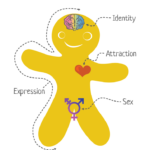 Tożsamość płciowa i orientacja seksualna to różne cechy osobowości. Tożsamość płciowa jest kwestią osobistą (jak postrzegasz siebie), dotyczy ona tego, jak definiujesz siebie w odniesieniu do własnej płci. Podczas gdy orientacja seksualna ma charakter interpersonalny (kogo pociągasz fizycznie, emocjonalnie i/lub romantycznie). Tradycyjne normy społeczne często dyktują surowe zasady dotyczące tego, jak ludzie „powinni” zachowywać się, […]
Tożsamość płciowa i orientacja seksualna to różne cechy osobowości. Tożsamość płciowa jest kwestią osobistą (jak postrzegasz siebie), dotyczy ona tego, jak definiujesz siebie w odniesieniu do własnej płci. Podczas gdy orientacja seksualna ma charakter interpersonalny (kogo pociągasz fizycznie, emocjonalnie i/lub romantycznie). Tradycyjne normy społeczne często dyktują surowe zasady dotyczące tego, jak ludzie „powinni” zachowywać się, […] Różnorodność płciowa nie jest tylko trendem, nie jest kaprysem, nie jest chorobą, nie jest perwersją, a dzieci nie są zagrożone przez osoby transpłciowe. Dzieci uczące się o transpłciowości nie wpływają na swoją tożsamość płciową. Taka wiedza nie sprawia, że dzieci cispłciowe „stają się” transpłciowe, podobnie jak uczenie się o różnych narodowościach nie zmienia czyjegoś pochodzenia […]
Różnorodność płciowa nie jest tylko trendem, nie jest kaprysem, nie jest chorobą, nie jest perwersją, a dzieci nie są zagrożone przez osoby transpłciowe. Dzieci uczące się o transpłciowości nie wpływają na swoją tożsamość płciową. Taka wiedza nie sprawia, że dzieci cispłciowe „stają się” transpłciowe, podobnie jak uczenie się o różnych narodowościach nie zmienia czyjegoś pochodzenia […] Dla wielu osób zróżnicowanych płciowo koncepcja płci binarnej – konieczność wyboru wyrażania siebie jako mężczyzny lub kobiety – jest ograniczająca. Niektórzy ludzie woleliby mieć swobodę wyboru płci lub w ogóle nie mieć tożsamości płciowej. Inni chcą po prostu móc otwarcie przeciwstawić się lub rzucić wyzwanie bardziej znormalizowanym koncepcjom płci. Tożsamość płciowa jest częścią naszego postrzegania […]
Dla wielu osób zróżnicowanych płciowo koncepcja płci binarnej – konieczność wyboru wyrażania siebie jako mężczyzny lub kobiety – jest ograniczająca. Niektórzy ludzie woleliby mieć swobodę wyboru płci lub w ogóle nie mieć tożsamości płciowej. Inni chcą po prostu móc otwarcie przeciwstawić się lub rzucić wyzwanie bardziej znormalizowanym koncepcjom płci. Tożsamość płciowa jest częścią naszego postrzegania […]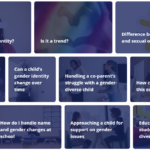 Narzędzia cyfrowe (The GENDER 101 digital tools) to przełomowe narzędzia, które pomagają środowiskom edukacyjnym zrozumieć różnorodność i tożsamość płciową. Te unikalne narzędzia zapewniają niezbędne narzędzia, spostrzeżenia i strategie, które pomagają wspierać debaty na temat płci, kwestionować ustalone konwencje i promować bardziej inkluzywne spojrzenie na tożsamość płciową.
Narzędzia cyfrowe (The GENDER 101 digital tools) to przełomowe narzędzia, które pomagają środowiskom edukacyjnym zrozumieć różnorodność i tożsamość płciową. Te unikalne narzędzia zapewniają niezbędne narzędzia, spostrzeżenia i strategie, które pomagają wspierać debaty na temat płci, kwestionować ustalone konwencje i promować bardziej inkluzywne spojrzenie na tożsamość płciową.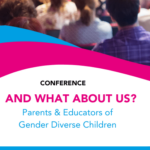 Konferencja „A Co z nami? Rodzice i edukatorzy osób zróżnicowanych płciowo” ma na celu pogłębienie zrozumienia różnorodności płciowej wśród dzieci.
Konferencja „A Co z nami? Rodzice i edukatorzy osób zróżnicowanych płciowo” ma na celu pogłębienie zrozumienia różnorodności płciowej wśród dzieci.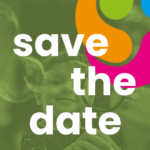 Zespół projektowy planuje organizację wydarzeń we wszystkich krajach objętych projektem
Zespół projektowy planuje organizację wydarzeń we wszystkich krajach objętych projektem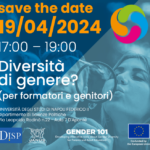 Różnorodność płci? (dla trenerów i rodziców) – 19 kwietnia 2024 r., Neapol (Włochy) – 17:00-19:00
Różnorodność płci? (dla trenerów i rodziców) – 19 kwietnia 2024 r., Neapol (Włochy) – 17:00-19:00 „Przewodnik dla trenerów: Wprowadzenie do różnorodności płciowej” to doskonałe źródło informacji dla trenerów, którzy chcą skutecznie radzić sobie z tożsamością płciową, ekspresją płciową i powiązanymi wyzwaniami.
„Przewodnik dla trenerów: Wprowadzenie do różnorodności płciowej” to doskonałe źródło informacji dla trenerów, którzy chcą skutecznie radzić sobie z tożsamością płciową, ekspresją płciową i powiązanymi wyzwaniami. W tym wydaniu: Program GENDER 101 dla trenerów; Informacje zwrotne na temat szkolenia GENDER1 101 od trenerów i rodziców; Spotkanie przejściowe online i międzynarodowe spotkanie projektowe w Irlandii; Korzystanie z przewodnika dla trenerów
W tym wydaniu: Program GENDER 101 dla trenerów; Informacje zwrotne na temat szkolenia GENDER1 101 od trenerów i rodziców; Spotkanie przejściowe online i międzynarodowe spotkanie projektowe w Irlandii; Korzystanie z przewodnika dla trenerów Partnerzy projektu aktywnie współpracują przy jego realizacji.
Partnerzy projektu aktywnie współpracują przy jego realizacji. Kursy szkoleniowe odbyły się latem 2023 r. z udziałem rodziców z sześciu krajów partnerskich. Chociaż niektórzy partnerzy napotkali trudności w rekrutacji rodziców do udziału w zajęciach, po zakończeniu sesji rodzice czuli się komfortowo i bezpiecznie oraz zdawali sobie sprawę, że uczestniczą w zajęciach w atmosferze otwartości, gdzie mogą się uczyć, rozmawiać i zadawać pytania.
Kursy szkoleniowe odbyły się latem 2023 r. z udziałem rodziców z sześciu krajów partnerskich. Chociaż niektórzy partnerzy napotkali trudności w rekrutacji rodziców do udziału w zajęciach, po zakończeniu sesji rodzice czuli się komfortowo i bezpiecznie oraz zdawali sobie sprawę, że uczestniczą w zajęciach w atmosferze otwartości, gdzie mogą się uczyć, rozmawiać i zadawać pytania.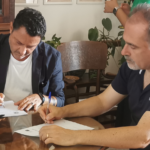 Rozmaite działania przeprowadzone z udziałem 18 trenerów i 360 rodziców w krajach objętych projektem dały zespołowi projektowemu możliwość zebrania kompleksowych informacji zwrotnych na temat szkolenia w ramach projektu.
Rozmaite działania przeprowadzone z udziałem 18 trenerów i 360 rodziców w krajach objętych projektem dały zespołowi projektowemu możliwość zebrania kompleksowych informacji zwrotnych na temat szkolenia w ramach projektu. Jednym z rezultatów projektu Gender 101 jest stworzenie przestrzeni do szkolenia w zakresie różnorodności płci.
Jednym z rezultatów projektu Gender 101 jest stworzenie przestrzeni do szkolenia w zakresie różnorodności płci. W tym wydaniu: Podstawowe terminy związane z tożsamością płciową; Międzynarodowe spotkanie projektowe w Polsce: Program edukacyjny GENDER 101 dla trenerów i rodziców; Szkolenie trenerów GENDER 101 w krajach uczestniczących w projekcie; Przewodnik GENDER 101 dla trenerów
W tym wydaniu: Podstawowe terminy związane z tożsamością płciową; Międzynarodowe spotkanie projektowe w Polsce: Program edukacyjny GENDER 101 dla trenerów i rodziców; Szkolenie trenerów GENDER 101 w krajach uczestniczących w projekcie; Przewodnik GENDER 101 dla trenerów Edukacja poświęcona GENDER 101 objęła 360 rodziców w krajach uczestniczących w projekcie.
Edukacja poświęcona GENDER 101 objęła 360 rodziców w krajach uczestniczących w projekcie.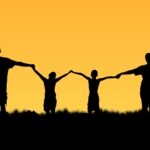 Materiały pomocnicze GENDER 101 dla trenerów i stron zainteresowanych przygotowane przez zespół projektowy
Materiały pomocnicze GENDER 101 dla trenerów i stron zainteresowanych przygotowane przez zespół projektowy Kursy doskonalące GENDER 101 dla trenerów we wszystkich krajach realizujących projekt
Kursy doskonalące GENDER 101 dla trenerów we wszystkich krajach realizujących projekt W dniach 23-24 maja 2023 r. zespół projektowy spotkał się w Łodzi (Polska)
W dniach 23-24 maja 2023 r. zespół projektowy spotkał się w Łodzi (Polska) Wewnątrz tego wydania: Gender?; Płeć i język; Grupy fokusowe z nauczycielami i rodzicami w krajach objętych projektem; Projekt GENDER 101; Misja projektu GENDER 101; Branding GENDER 101; Spotkanie inauguracyjne GENDER 101 na Litwie
Wewnątrz tego wydania: Gender?; Płeć i język; Grupy fokusowe z nauczycielami i rodzicami w krajach objętych projektem; Projekt GENDER 101; Misja projektu GENDER 101; Branding GENDER 101; Spotkanie inauguracyjne GENDER 101 na Litwie W trakcie działań konsultacyjnych prowadzonych na Malcie, Litwie, w Polsce, Irlandii, Włoszech i Chorwacji, w ramach projektu GENDER 101 zidentyfikowano kluczowe słowa opisujące płeć i przeszkody w integracji płci
W trakcie działań konsultacyjnych prowadzonych na Malcie, Litwie, w Polsce, Irlandii, Włoszech i Chorwacji, w ramach projektu GENDER 101 zidentyfikowano kluczowe słowa opisujące płeć i przeszkody w integracji płci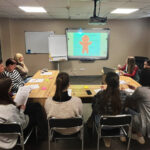 Zespół projektowy przeprowadził konsultacje z nauczycielami i rodzicami na Malcie, Litwie, w Polsce, Irlandii, Włoszech i Chorwacji na temat płci i przeszkód w integracji płci
Zespół projektowy przeprowadził konsultacje z nauczycielami i rodzicami na Malcie, Litwie, w Polsce, Irlandii, Włoszech i Chorwacji na temat płci i przeszkód w integracji płci Język i płeć są ze sobą powiązane, ponieważ język może odzwierciedlać i wzmacniać społeczne normy i oczekiwania dotyczące płci
Język i płeć są ze sobą powiązane, ponieważ język może odzwierciedlać i wzmacniać społeczne normy i oczekiwania dotyczące płci Niedawno podjęto pewne wysiłki w celu promowania języka uwzględniającego płeć na Malcie, ale proces ten wciąż trwa
Niedawno podjęto pewne wysiłki w celu promowania języka uwzględniającego płeć na Malcie, ale proces ten wciąż trwa W Chorwacji nie ma określonego standardu ani przewodnika, który byłby używany jako język genderowy
W Chorwacji nie ma określonego standardu ani przewodnika, który byłby używany jako język genderowy Używanie języka genderowego w języku irlandzkim może być kwestią sporną, szczególnie w odniesieniu do włączenia osób niebinarnych i niezgodnych z płcią
Używanie języka genderowego w języku irlandzkim może być kwestią sporną, szczególnie w odniesieniu do włączenia osób niebinarnych i niezgodnych z płcią Język polski jest generalnie binarny, rzeczowniki posiadają rodzaj, również czasowniki i przymiotniki odmieniane są w zależności od rodzaju rzeczownika, do którego się odnoszą
Język polski jest generalnie binarny, rzeczowniki posiadają rodzaj, również czasowniki i przymiotniki odmieniane są w zależności od rodzaju rzeczownika, do którego się odnoszą Tożsamość płciowa nadal nie jest prawnie uznawana na Litwie. W związku z tym w języku litewskim nie ma oddzielnych słów określających różne aspekty płci
Tożsamość płciowa nadal nie jest prawnie uznawana na Litwie. W związku z tym w języku litewskim nie ma oddzielnych słów określających różne aspekty płci W języku włoskim trwają badania nad odpowiednimi wyrażeniami reprezentującymi osoby, które nie rozpoznają siebie w binarnej płci, w celu promowania języka, który będzie bardziej szanował różnorodność i uwzględniał wszystkie płcie
W języku włoskim trwają badania nad odpowiednimi wyrażeniami reprezentującymi osoby, które nie rozpoznają siebie w binarnej płci, w celu promowania języka, który będzie bardziej szanował różnorodność i uwzględniał wszystkie płcie „Płeć odnosi się do cech kobiet, mężczyzn, dziewcząt i chłopców, które są zdeterminowane społecznie”. Światowa Organizacja Zdrowia, 2023
„Płeć odnosi się do cech kobiet, mężczyzn, dziewcząt i chłopców, które są zdeterminowane społecznie”. Światowa Organizacja Zdrowia, 2023 W dniach 24-25 stycznia 2023 r. zespół projektu GENDER 101 spotkał się osobiście w Szawlach (Litwa)
W dniach 24-25 stycznia 2023 r. zespół projektu GENDER 101 spotkał się osobiście w Szawlach (Litwa)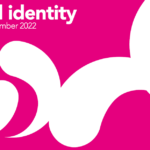 W ramach projektu GENDER 101 opracowano strategię brandingową opartą na logo i identyfikacji wizualnej
W ramach projektu GENDER 101 opracowano strategię brandingową opartą na logo i identyfikacji wizualnej Spotkanie inauguracyjne online partnerów projektu w celu zainicjowania działań GENDER 101
Spotkanie inauguracyjne online partnerów projektu w celu zainicjowania działań GENDER 101